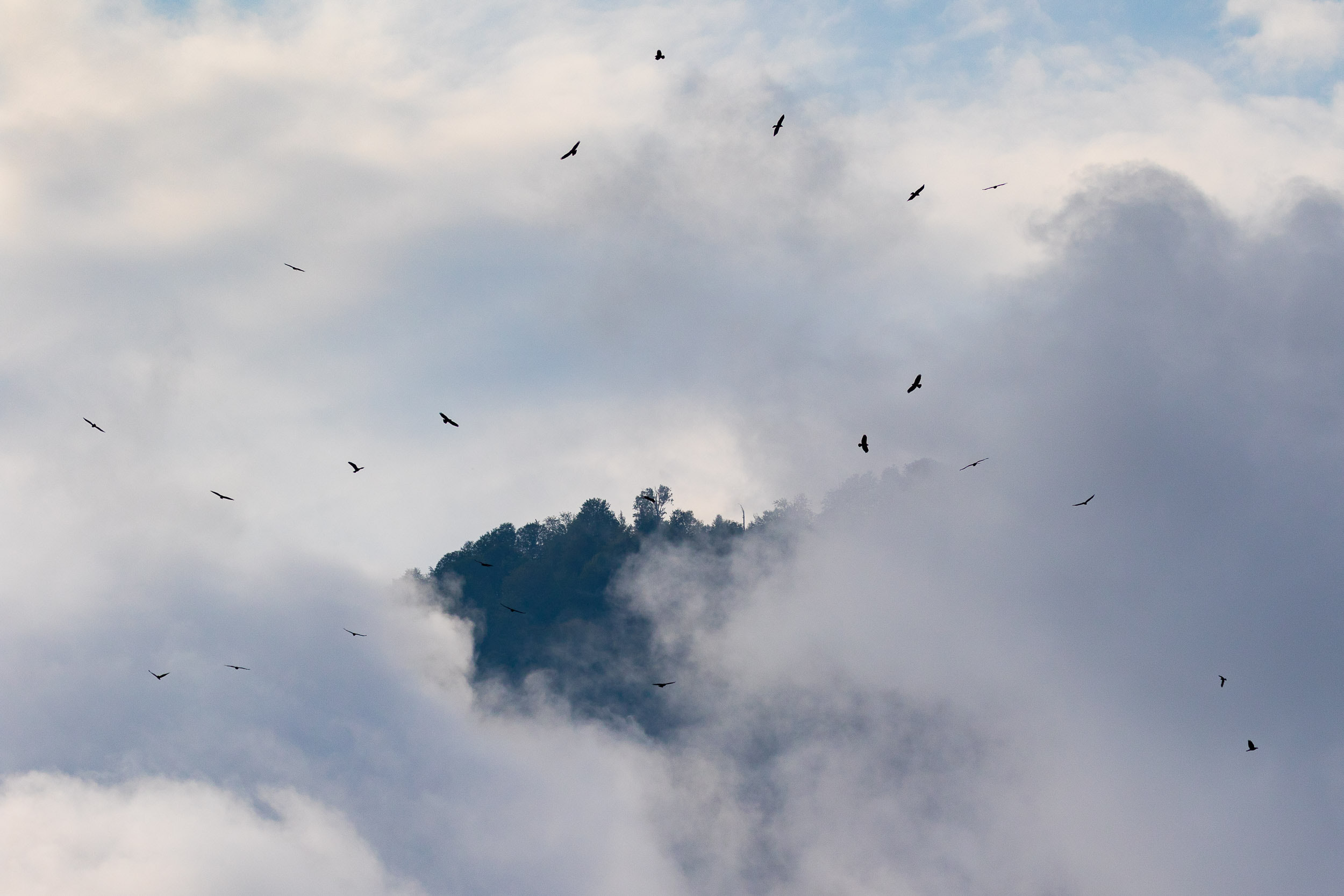
5 Reasons why you should NOT participate in Batumi Raptor Count
Since 2008, in a decade of counts, over 300 volunteers have participated in the annual Batumi Raptor Count. This year, the 11th count is held, which runs from August 17th until October 16th of 2018. Despite the positive stories you may have heard from volunteers or visitors, participation in the count or coming as a visitor is not without some drawbacks! In the spirit of transparency, we have listed the most frequently encountered problems participants face during and after their stay.
1. Watching raptors won’t ever be the same again
You could be lucky enough to see an Imperial Eagle flying 20 meters past the station. Maybe you can even hear the wind move through its feathers. Photo by John Wright.
Those fantastic days of raptor migration in your home country or in other migration hotspots? They will forever pale in comparison with what you experience in the Batumi bottleneck. Every single Honey Buzzard you see will bring back the good memories of seeing 50,000+ migrate on a single day; every harrier will remind you of the sun rising in a sky scattered with Marsh, Montagu’s and Pallid harriers; every eagle… well, you get the point. By participating, you risk becoming forever spoiled with experiencing migration of more than a million birds and around 30 species in a period of only 2 months.
A kettle of Honey Buzzards disappearing in the clouds, a regular sight in the Batumi bottleneck. Photo by Bart Hoekstra.
2. Painful fingers
At BRC we like to count birds so much, we count them one at a time! Our trusty clickers keep track of the numbers, while the most important thing counters have to do is move their fingers at the pace of birds crossing the transect line. A calm but continuous click-click-click-click is the resulting background sound throughout the day… That is until migration breaks loose and the calm clicking turns into a frenzy of rattling counters all over the station. The upshot? You will physically be able to feel the intensity of migration. The downside? Your fingers will end up hurting and we cannot guarantee you won’t develop temporary RSI-like symptoms. Imagine clicking streams of birds like in the video below, but for hours on end on all sides of the stations:
Video by Elien Hoekstra.
3. We don't count everything
At BRC we have made the decision to focus on a few key species for the bottleneck. Our aim is to count those species really well, instead of counting all species badly. These tens of thousands of Bee-Eaters flying by? All these Hobbies, Common and Lesser Kestrels? These Long-legged Buzzards or Alpine Swifts? Painful, maybe, but you will just have to enjoy them. Instead, we’ll keep you busy identifying, sexing and ageing our target species at a rapid pace. This should provide plenty of entertainment and learning experience for even the most hardcore of counters.
Yeah, you'll just have to enjoy those. Photo by Romain Riols.
A publication about the recent trends in abundance and migration timing of juveniles and non-juveniles from 10 years of standardized counts is currently under review. Keep an eye out on our website or Facebook page for an announcement when it has been published.
4. (Almost) Every day is the same
Clicking these clickers, scanning the sky through the binoculars and identifying species by scope. All. Day. Long. Photo by Martha Mutiso.
Every single day, except for the one day a week in which you have a day off, will look like this: You wake up an hour before sunrise, prepare your stuff and have breakfast. A delicious lunch prepared by the host families will be waiting for you to take to the station. Then, from sunrise until 2 hours before sunset you will be counting birds in a standardized fashion, independent of weather conditions. When you return to the guesthouse, tired but satisfied, families will provide a dinner full of Georgian delicacies, after which you’re free to do as you like.
Doing the same thing every day ensures we run a smooth count, even if tens of thousands of Honey Buzzards pass by. Video by Triin Kaasiku.
All we can offer to break the daily slur, besides the birds you’ll be seeing, is 1 day off per week in which you can explore the region (or sleep), a very international group of like-minded birders from all experience levels, a pleasant atmosphere, regular evening presentations to get to know the raptor species and each other, drinks in the Green Cafe and the occasional team visits to the nearby beach.
5. You may come back again… and again…
Sunrise from station 1. The calm before the storm in a landscape you won't quickly forget. Photo by Triin Kaasiku.
The birds, the people, the country, the food, there are plenty of reasons to come back one more time. And many participants do come back as counter or coordinator, time and again, despite the hardships described above. It is quite likely you will plan to come again next autumn the moment you have ended your stay and leave Georgia for your home country. Consider this before you plan to come only once.
So what?
If after reading this you still think you want to participate, you can read more and apply here . But… you have been warned!
This blog originally appeared on the website of OSME, the Ornithological Society of the Middle East, the Caucasus and Central Asia.